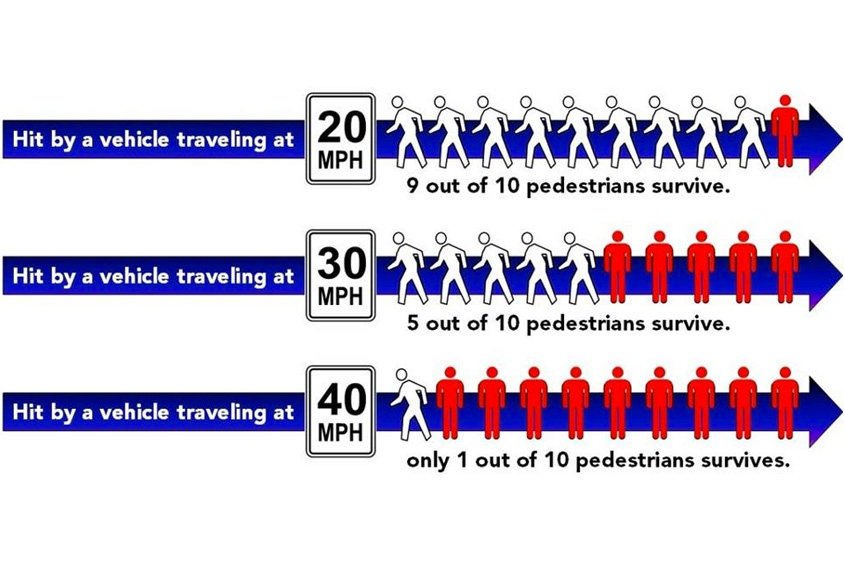Dear Council members:
The most important thing you should know about 20 is Plenty is that it saves lives. It is clear that by passing this ordinance today, you will have saved lives for many, many years to come. You can be proud of your role in this outcome.
To date, 73 neighborhoods have gone through the cumbersome task of getting 30% of their neighbors to request speed mitigation during the short, three-year NSMP program. This shows a tremendous demand for lower speeds among neighborhoods throughout the city, across many ages and income levels.
One advantage of 20 is Plenty is that it is highly equitable, affecting all residential neighborhoods equally. The NSMP, as great as it is, tends to favor wealthier, single-family neighborhoods where fewer signatures (and less time) are required to meet the 30% neighborhood participation threshold. Wealthier neighborhoods tend to be more organized (with email lists, etc) and to have people with available time to make the effort to collect signatures.
Twenty is Plenty will make an actual difference. A study by the Insurance Institute for Highway Safety showed that, even without posting signs, there was a considerable decrease in speeding just by lowering the speed limit. In fact, the biggest decrease in speeding was seen by vehicles going 10 miles or more over the speed limit. These are the changes in behavior that will lead to real improvements in street safety, as the graphic above shows.
Research in the UK shows reductions in median speed of 1 to 3 mph result from just lowering speed limits, without changing the physical design of the street. Combining 20 is Plenty with further targeted treatment through the NSMP and systemic changes in the Design and Construction Standards will result in a change in the socially acceptable behavior of drivers on our neighborhood streets, leading to more pleasant and safer streets. Twenty is Plenty is really about changing expectations around appropriate traffic speeds, city-wide.
Seattle has just finished studying a reduction of 5 mph using just signage and found average speeds dropped 3 – 15%, crashes dropped 18 – 39%, injury crashes dropped 11 – 39%, and high end speeding dropped 45 – 65%. (Source: Dongho Chang, City of Seattle Traffic Engineer)
A paper released by the Bend, OR Transportation Advisory Committee is worth a look as well. Using an extensive amount of studies they cite for data, the case is made that speed limit reductions from 25 to 20 show benefits in safety, reduced congestion, reduced VMT, reduced CO2, and reduced noise pollution and an increase in economic activity.
Finally, as a community we need to ask ourselves, “Is 5 mph worth your life or the life of someone you care about? Is it worth the life of your fellow citizens?” Neighborhood streets are where kids play and pets roam, both darting out into the street and yes, sometimes a child gets killed. Are we willing to take that risk just to go 5 mph faster for a few blocks? Are we willing to slow down slightly to save lives?
We would like to thank you for your support of Boulder’s 20 is Plenty ordinance change. We appreciate all the effort you put into keeping our community safe.
Sincerely,
The Community Cycles Advocacy Committee

